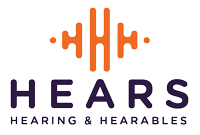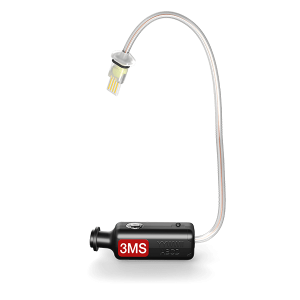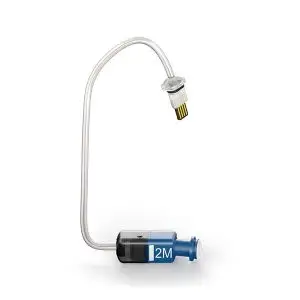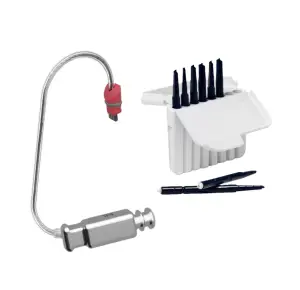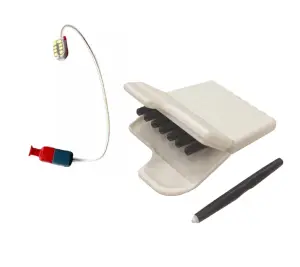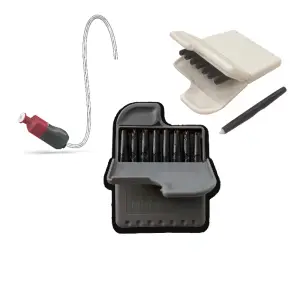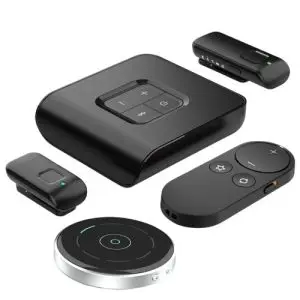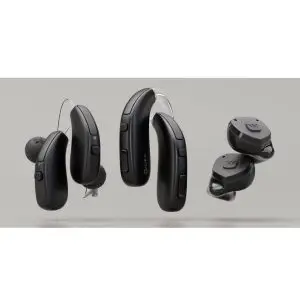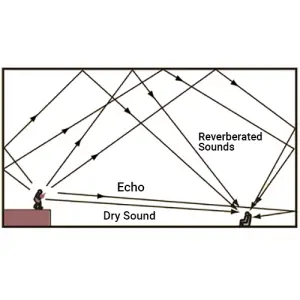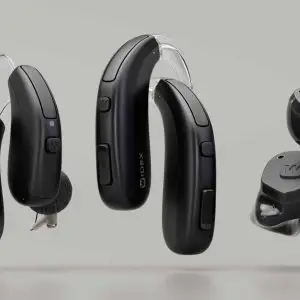Finding the Right Schedule: How Often to Check In With Your Hearing Care Provider
Caring for your hearing is just as important as caring for your eyes or teeth, but how often should you see your audiologist or hearing care provider? The answer isn’t a one-size-fits-all.
Many providers recommend a check-in every 4–6 months, but this depends on your individual needs. Here’s a guide to help you decide what’s right for you and some reasons why more frequent visits might be helpful.
Who Might Need More Frequent Visits
Some people benefit from seeing their audiologist more often, especially if they experience any of the following:
-
Fluctuating hearing loss:
Conditions like Meniere’s disease can cause your hearing to shift often at the beginning of the disease. Fluctuating hearing loss isn’t limited to Meniere’s disease, though. There are several other conditions where hearing can change from day to day or even throughout the same day.
- Autoimmune Inner Ear Disease (AIED) is one example, where the body’s immune system mistakenly attacks the inner ear, leading to sudden drops or improvements in hearing.
- Viral or bacterial infections, such as those affecting the middle or inner ear, can also cause temporary changes in hearing that may improve once the infection resolves.
- Eustachian tube dysfunction is another issue often related to allergies, sinus issues, or colds, which can create a sensation of fullness and temporary hearing changes as fluid builds up or drains.
- Sudden sensorineural hearing loss (SSNHL) is another important type, where hearing can drop rapidly and unexpectedly, often requiring immediate medical attention.
- Even people with otosclerosis or early-stage hearing loss related to aging may notice fluctuations depending on stress, fatigue, or other health factors. For individuals with these types of conditions, regular check-ins with their audiologist are essential to monitor changes and adjust treatment as needed.
- If your hearing aids suddenly seem too loud or too soft, an adjustment may be needed. In some cases, your provider may test your hearing thresholds to determine if there’s been a significant change.
Important note: A sudden, significant change in hearing should always be evaluated by an ENT doctor to rule out medical concerns.
-
Tinnitus or changing symptoms:
- Counseling, strategy updates, or new approaches may be necessary to help you manage symptoms in complex listening environments.
-
Earwax buildup:
- Some people produce more earwax than others. While there are safe tools and techniques to manage wax at home, many patients prefer professional cleanings.
- Avoid Q-tip-type tools! These can push wax deeper and make matters worse.
-
Counseling and aural rehabilitation:
- If you need a refresher on using your hearing aid’s app, learning new strategies, or working with accessories, more frequent visits can help you stay confident and connected.
Hearing loss counseling and aural rehabilitation are essential parts of helping people get the most out of their hearing aids and improve communication in everyday life. Counseling often involves teaching patients and their families practical communication strategies. Such as facing the speaker, reducing background noise, and using clear speech cues. It can also include emotional support, helping individuals cope with the frustration, stress, or isolation that sometimes comes with hearing loss.
Aural rehabilitation takes this a step further by providing personalized training and exercises to strengthen listening and understanding skills. For example, an audiologist might use speechreading practice, listening exercises in noise, or teach patients how to pair and effectively use hearing aid accessories like remote microphones or TV streamers. Group classes or one-on-one sessions may focus on problem-solving real-world listening challenges. Such as hearing better at restaurants, during phone calls, or in meetings.
Together, counseling and aural rehab empower patients to take an active role in their hearing health. Therefore improving both confidence and quality of life.
Hearing Aid Maintenance: Why It Matters
Regular visits aren’t just about your ears, they’re also about keeping your devices in top shape.
-
Moisture damage:
- Moisture is a leading cause of hearing aid issues. Our clinic uses the Redux system, which can remove significant amounts of moisture.
- Example: One patient had 2.7 units of moisture removed (normal is less than 0.5!).
-
Tubing replacement:
- For those with traditional behind-the-ear (BTE) hearing aids, tubing can harden over time.</li>
- Some people need new tubing every few months, while others can go years without an issue — it all depends on body chem
- istry.
-
Domes and sleeves:
- Swapping out domes can make a big difference in sound quality, especially for open-fit hearing aids.
For instance, if you want more low-frequency or just volume, trying a new dome might be all it takes. Switching from an open dome to a closed dome can significantly increase the perception of low-frequency gain and volume for many hearing aid users.
Open domes have small vents or openings that allow natural sound, including low-frequency sounds, to enter and escape the ear canal freely. While this creates a more natural sound quality and helps reduce the “plugged-up” feeling, it also means that much of the amplified low-frequency sound provided by the hearing aid leaks out instead of staying in the ear.
A closed dome seals the ear canal more effectively, trapping the amplified sound inside. This creates better bass response, making voices sound fuller and improving the audibility of deeper sounds, like vowels, background music, or environmental noises such as a car engine. Closed domes can also reduce the amount of outside noise entering the ear naturally, allowing the hearing aid to provide more controlled amplification.
However, while closed domes offer more power and clarity for those who need low-frequency support, they may also increase the sensation of occlusion or make your own voice sound louder, which is why they’re best fitted and fine-tuned by an audiologist.
-
Firmware updates:
- Modern hearing aids now receive software updates, similar to smartphones. Your provider can let you know when updates are available for your devices.
Annual Check-Ins Are Still Important
Even if you don’t experience any issues, an annual visit is highly recommended.
- Hearing test updates: Medicare covers one hearing test per year with a doctor’s order. Keep an eye on any changes in hearing loss, balance, or tinnitus. An audiologist is a perfect person to make a referral if needed to an Ear Nose and Throat doctor.
- Deep cleaning for Hearing Aids: A yearly professional cleaning keeps your devices working like new.
- Technology review: If you’re curious about the latest advancements, your provider can share what’s new — though many people are now upgrading less frequently.
Finding the Right Balance
Not everyone needs to visit the clinic often, while others may need more frequent care. Think of it like a bell curve:
- Some people come in too often for issues that don’t require attention.
- Others don’t come in enough, risking unnoticed changes in hearing or device performance.
The goal is to find a personalized schedule that works for you. If you feel like a visit didn’t accomplish much, you can space out your appointments. Spacing out too much, and you can adjust your appointment follow-up sooner until you find that perfect balance of visits. If you notice changes in your hearing or devices, don’t wait; schedule a visit.
Telehealth Check-Ins: Convenient Care from the Comfort of Home
Telehealth visits have become an excellent option for many patients, offering convenience while still providing quality hearing care. A virtual check-in allows the audiologist to review changes in hearing or device performance through a secure video call, making it possible to troubleshoot issues without requiring an in-person visit.</p>
During these appointments, providers can walk patients through steps like cleaning their hearing aids, checking for proper fit, or demonstrating how to use certain features in the app or access
ories. They can also review recent changes in hearing, discuss symptoms like increased tinnitus or fluctuations, and determine whether a follow-up in the clinic is needed for testing or adjustments. For patients who live far away, have mobility challenges, or simply need quick guidance, telehealth offers a convenient way to stay on track with hearing health care. While not every issue can be resolved remotely, a video call can count as a valuable check-in and help keep care consistent between in-person visits.
The Bottom Line
Regular check-ins with your hearing care provider help protect both your hearing and your investment in your hearing aids.</p>
Whether it’s troubleshooting, wax removal, adjusting for fluctuating hearing loss, or updating your technology, these visits ensure you’re getting the most out of your hearing
care.
Tip: If you ever experience a sudden or dramatic change in your hearing, call your provider right away.
